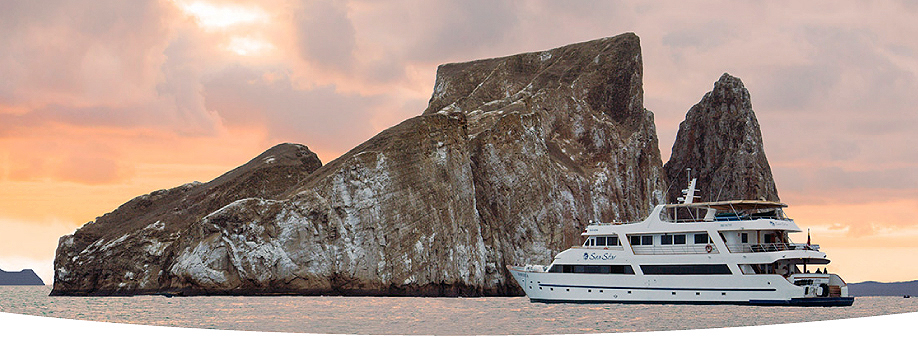

M/Y Sea Star Journey Cruise C:
Galapagos Islands
Galapagos Islands
This boutique yacht, with 8 spacious suites, was named "South America's Leading Boutique Cruise for 2017" by World Travel Awards. Amenities include a large solarium with hot tubs and a mini-spa. Capacity: 16 guests.
ACCOMMODATIONS
• Cruise Accommodations
INCLUSIONS
• Roundtrip Air &
Ground Transfers
Ground Transfers
• Galapagos National Park
Entrance Fee
Entrance Fee
• Excursions with Naturalist Guide
• All Meals
• All Meals
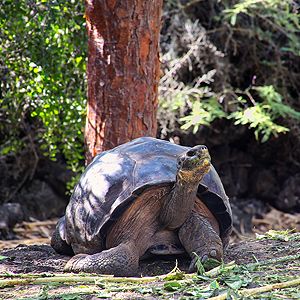
Arrival:
(AM) Flight to Galapagos from Quito/Guayaquil Airport:
Upon arrival at Baltra Airport, travelers pass through an airport inspection point to ensure that no foreign plants or animals are introduced to the islands, as well as to pay the park entrance fee of $100 (unless it has been prepaid). A representative of our M/Y Galapagos Sea Star Journey will meet you, help you collect your luggage, and escort you on a bus ride to the Itabaca Channel and then transfer to Puerto Ayora on Santa Cruz Island.
(PM) Charles Darwin Station, Santa Cruz Island:
Although the great majority of Galapagos visitors come here to observe and appreciate natural wonders, they also learn how the people are working to protect and conserve the islands. In fact, the main attractions are the National Park information center, the Van Staelen Exhibition Hall, the Breeding and Rearing Center for young tortoises and adult Galapagos tortoises in captivity.
(Lunch, Dinner & Accommodations, M/Y Sea Star Journey)
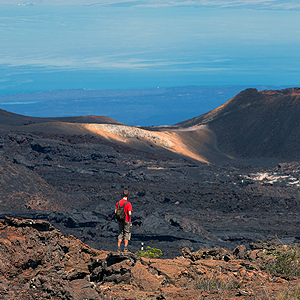
M/Y Sea Star Journey:
(AM) White-Tipped Reef Shark Canal, Isabela Island:
"Tintoreras" are small islands in front of Puerto Villamil coast. There are Lava Heron on the lookout on mangrove branches, and Galapagos Penguins and sea lions often pop up on shore. White-tipped reef sharks are fairly common in the archipelago. Their name in Spanish is Tintorera, for which this site is named, because you can always find them here resting in the shallow waters.
(PM) Sierra Negra Volcano, Isabela Island:
Isabela Island is the largest and one of the youngest islands in the Galapagos archipelago. We land in Puerto Villamil, which has the second smallest population in Galapagos with approximately 3000 inhabitants. We head up to the highlands to Sierra Negra slope, and later we will do some hiking on uneven terrain until we arrive to the Sierra Negra volcano rim. Sierra Negra is the second widest crater in the world. From this viewpoint, you have fantastic sights to the 6 x 5 -mile-wide crater, the rest of the volcanoes, and Perry Isthmus, a 12km wide lava field. In fact, from here we can hike to Chico Volcano to watch the striking lava formations, examples of the geological occurrences that have created the Galapagos Islands.
(Breakfast, Lunch, Dinner, & Accommodations, M/Y Sea Star Journey)
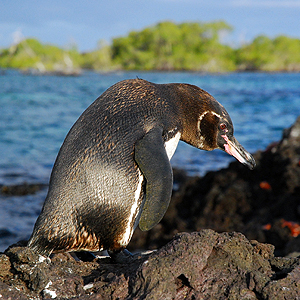
M/Y Sea Star Journey:
(AM) Punta Moreno, Isabela Island:
Punta Moreno is located on the north coast of Isabela Island between the volcano Sierra Negra and Cerro Azul volcano. The trail runs along a lava flow Pahohoe (solidified lava in the form of corrugated or an accordion) into a complex of coastal lagoons. Its main attractions are several species of birds which can be found around its lakes and mangroves.
(PM) Elizabeth Bay, Isabela Island:
This is a marine visitor site, so the excursion is carried out in a zodiac and so there is no landing point. Your zodiac ride starts with a visit to the Marielas islets, where the largest and most important penguin colony in the Galapagos Islands resides. The excursion continues into a cove surrounded by red mangroves where you can admire their red roots and green leafs. Here you are able to observe sea turtles, flightless cormorants, spotted eagle rays, golden rays, brown pelicans and sea lions. Frequently visitors have been able to see Galapagos Hawks soaring overhead whilst schools of Pompano and Dorado fish swim below.
(Breakfast, Lunch, Dinner, & Accommodations, M/Y Sea Star Journey)
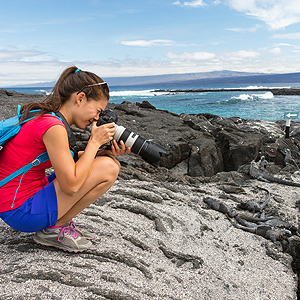
M/Y Sea Star Journey:
(AM) Punta Espinoza, Fernandina Island:
Fernandina is the third largest island in the archipelago and it has a single visitor site: Punta Espinoza located at the northeastern tip of the island. However, just across Tagus Cove, you can see some of the unique species of Galapagos: marine iguanas converge in larger groups than on any other island. They bask around in the sand, swim near the shore and sometimes block the way at the landing dock. Among the unique species found here is the Flightless Cormorant, a bird that, due to the lack of predators, had to adjust their way of survival and improve their skills of finding food in the ocean. Their wings, tails and feet progressively adapted for swimming. In fact, to see these birds is to witness evolution happening right in front of you.
(PM) Tagus Cove, Isabela Island:
A tour along the cliffs in a zodiac will give the visitors a good chance to see the Galapagos penguin, the flightless cormorant as well as other sea birds. From the landing dock it is about a 30-minute hike along the trail up to the top of the cliff. Here you can see Darwin Lake, an uplifted ultra-saline lake saltier than the sea. You can also see several volcanoes from this location. Look carefully at the graffiti on the surrounding cliffs of the cove—written by pirates, whalers and buccaneers in past centuries.
(Breakfast, Lunch, Dinner, & Accommodations, M/Y Sea Star Journey)
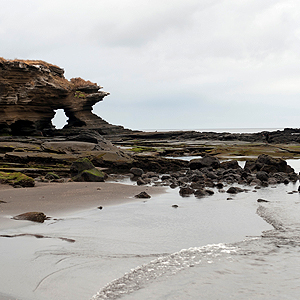
M/Y Sea Star Journey:
(AM) Espumilla Beach, Santiago Island:
Espumilla Beach is located in northern coast of Santiago Island in James Bay. The main attractions are the Palo Santo forest and the marvelous landscape. The beach is an important site for nesting marine turtles.
(PM) Puerto Egas, Santiago Island:
This black beach is located at the west side of the was formed by volcanic tuff deposits that created the special black sand beach. This site is called Puerto Egas, because there was an attempt by the company of Hector Egas to start the exploitation of salt. This failed because the price of salt in the continent was very cheap, and did not justify its exploitation in Galapagos. Accordingly, they abandoned the project but left the infrastructure.
(Breakfast, Lunch, Dinner, & Accommodations, M/Y Sea Star Journey)
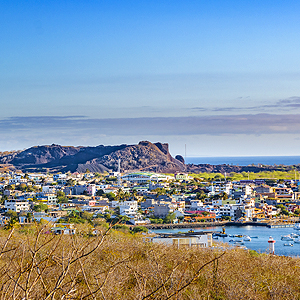
Departure:
(AM) Isla Lobos, San Cristobal:
This little island is reached by a one-hour Zodiac from Port Baquerizo Moreno, the capital of San Cristobal Island. The trail will lead across a dry vegetation zone, substrate of volcanic rocks and sandy areas. There is a small population of blue-footed boobies and frigate birds, which nest in this site. At the beach you will see a large colony of sea lions, and it is also common to see shorebirds.
After your visit to Isla Lobos, transfer to the airport in San Cristobal for your flight back to Quito or Guayaquil.
(Breakfast, M/Y Sea Star Journey)
** Itinerary and inclusions are subject to change




